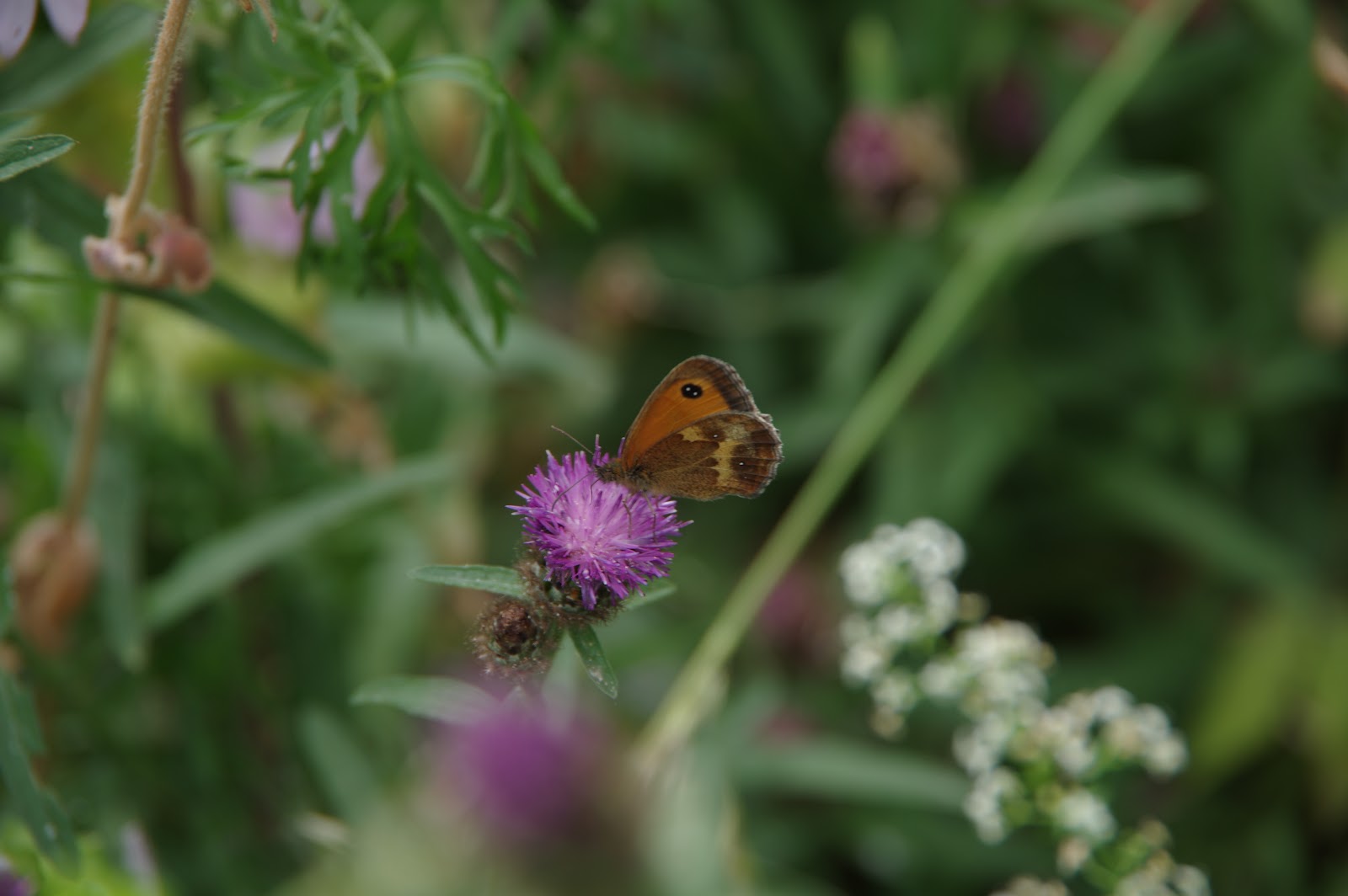Purple Loosestrife (Lythrum salicaria)
A diary of back garden botany, urban ecology, rural rambles and field trips to the middle of nowhere...
Thursday, 31 July 2025
Sunday, 27 July 2025
The Icknield Way runs through the pages of the diary on a regular basis. One notable aspect of this ancient route across Albion is that stretches of it are modern roads in current use. One such traverses Letchworth Garden City. So it was I followed the Icknield Way from Letchworth station to the edge of town.
I was heading to an area known locally as "The Roman Camp" which is on the Way and as it happens next to my old secondary school. The footpath seen above runs along the perimeter of the school playing field.
The Romans were known for their roads but quite happy to co-opt existing tracks. In fact the camp probably dates back to the Bronze Age. Given the sweeping views this would have been a strategic location.
More or less the view I used to gaze on in my schooldays looking towards the northerly Chiltern Hills. Perhaps it's not surprising that I continue to walk into that very landscape to this day.
Wednesday, 23 July 2025
Tuesday, 22 July 2025
Common Chicory (Cichorium intybus) pops up here and there in the countryside. I had always thought it to be an introduction to these shores but various sources list it as native. Actually I don't think it looks very 'British'. I reckon it drifted in from southern Europe sometime in the distant past.
Also grown in gardens and probably a garden escape in some locales. An edible herb, ancestor of culinary Chicory.
Thursday, 17 July 2025
Wednesday, 16 July 2025
I remember the mild spring following a cold winter was tremendous for apple blossom. Perhaps this has been offset somewhat by the drought which may have implications for the harvest.
However there's a good crop on a couple of apple trees at the music school which are the remnants of an orchard from its heyday as a Victorian country house.
I can vouch for the one shown above. I plucked it and ate it after taking the photograph and it was delicious!
Sunday, 13 July 2025
Thursday, 10 July 2025
The grassy meadows near Ickleford are parched. At one point a freight train ran along the adjoining railway line and it looked more like a scene from the Midwest of America.
This is good territory for butterfly spotting. To the right of the fence is an expanse of grass which slopes gently down to a marshier area on the left. I saw various species flitting around including Whites and Marbled Whites, Meadow Browns and Gatekeepers.
However the grasses are usually quite flowery with Thistles, Knapweeds, Scabious et al but much less so this year due to the effect of drought. Photographing butterflies is considerably easier when they pause briefly to nectar on a flowerhead!
The hedges were the most floriferous place to look on account of the Brambles. Even their flowering is not abundant and already going over to form a crop of not very juicy Blackberries. Anyway, here is a snap of a particularly woody Specked Wood:
Tuesday, 8 July 2025
Musk Mallow (Malva moschata) is a species I see in the chalk countryside from time to time, it likes a well drained soil. I imagine they would have been more common before farming mechanised and herbicides became the norm. An archetypal 'cottage garden plant' from the days when cottagers would have propagated the prettiest plants from the surrounding area for their gardens.
Bumblebees were busy on the flowers. I noticed they seemed to be ignoring the pollen dusted stamen in favour of nectar robbing i.e. extracting nectar from the base of the flower.
Friday, 4 July 2025
Elecampane (Inula helenium) is a plant I've always meant to grow. Obligingly this one has self-seeded on the allotment from a handsome stand on the neighbouring plot.
I. helenium is native to West and Central Asia but an ancient introduction on these shores. It was known to both the Celts and the Romans. Much plant lore is associated with the properties of Elecampane; herbalists regard it as medicinal and elves consider it to be magical.
Thursday, 3 July 2025
Subscribe to:
Comments (Atom)





































